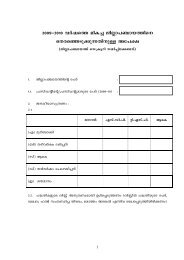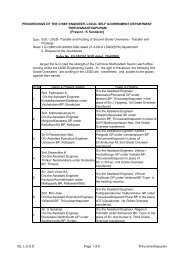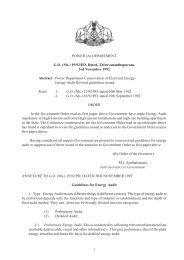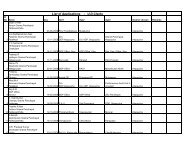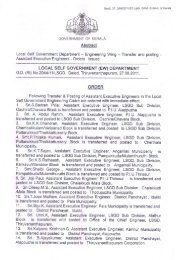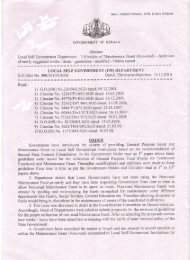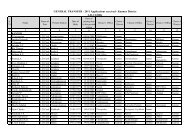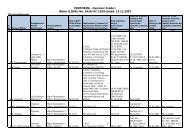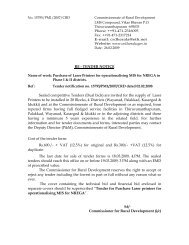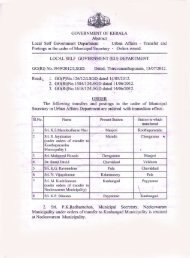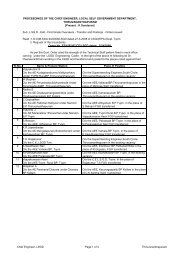Chapter 2 - Kerala Govt Logo
Chapter 2 - Kerala Govt Logo
Chapter 2 - Kerala Govt Logo
- No tags were found...
Create successful ePaper yourself
Turn your PDF publications into a flip-book with our unique Google optimized e-Paper software.
Environmental Assessment Report<strong>Kerala</strong> Local Government Strengthening Projectroots and tubers, plantation crops, aromatic and medicinal plants, bee-keeping andsericulture, for augmenting food supply, exports and generating employment in the ruralareas. Development of animal husbandry, poultry, dairying and aqua-culture will receive ahigh priority in the efforts for diversifying agriculture, increasing animal protein availabilityin the food basket and for generating exportable surpluses. An integrated approach tomarine and inland fisheries, designed to promote sustainable aquaculture practices, will beadopted.Generation and transfer of technology: NAP calls for according very high priority toevolving location specific and economically viable improved varieties of agricultural andhorticultural crops, livestock species and aquaculture. There is added emphasis onregionalization of agricultural research based on identified agro climatic zones.Inputs management: Adequate and timely supply of quality inputs such as seeds, fertilizers,plant protection chemicals, bio-pesticides, agricultural machinery and credit at reasonablerates to farmers will be the endeavour of the Government.Incentive for agriculture: Agricultural policy repeats the policy concerns echoed in thebeginning of green revolution to provide favourable economic environment for promotingfarm investments through (1) removal of distortions in the incentives (2) improvement interms of trade with manufacturing (3) external and domestic market reforms.Investment in agriculture: Public investment for narrowing regional imbalances,accelerating development of supportive infrastructure for agriculture and ruraldevelopment particularly rural connectivity will be stepped up.Institutional structure: NAP advocates land reforms by focusing on consolidation ofholdings, redistribution of surplus/waste land among landless, tenancy reforms,development of lease market and recognition of women‟s rights in land. Other areas listedfor policy attention are private sector participation through contract farming, assuredmarkets for crops especially for oilseeds, cotton and horticultural crops, increased flow ofinstitutional credit, strengthening and revamping of cooperative credit system. The policystates that the rural poor will be increasingly involved in the implementation of landreforms with the help of Panchayati Raj Institutions, Voluntary Groups, Social Activists andCommunity Leaders.Risk management: Price fluctuation and naturalcalamities are recognized as main factor forimparting instability to condition of farmers. NAPsuggests Agriculture Insurance Scheme covering allfarmers and all crops throughout the country withbuilt in provision for insulating farmers fromfinancial distress. Other measures suggested underthis are (1) enhancing flood proofing and droughtThe policy provides an overallframework for planning food securityactivities. However, the platform ofactions envisaged in the policy is verybroad. As such it is not veryresponsive to local environmentalscenario and hence may not influencethe ESMF.proofing through (2) ensuring remunerative prices through announcement of MSP and (3)future trading in agriculture products.Management reforms: Effective implementation of policy initiatives will call forcomprehensive reforms in the management of agriculture by the Central and the StateGovernments. The Central Government will supplement/complement the StateGovernments' efforts through regionally differentiated Work Plans, comprising26




